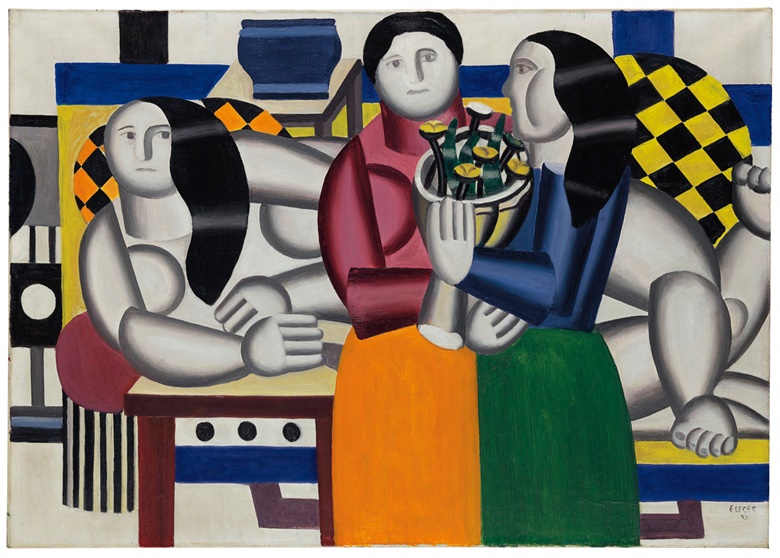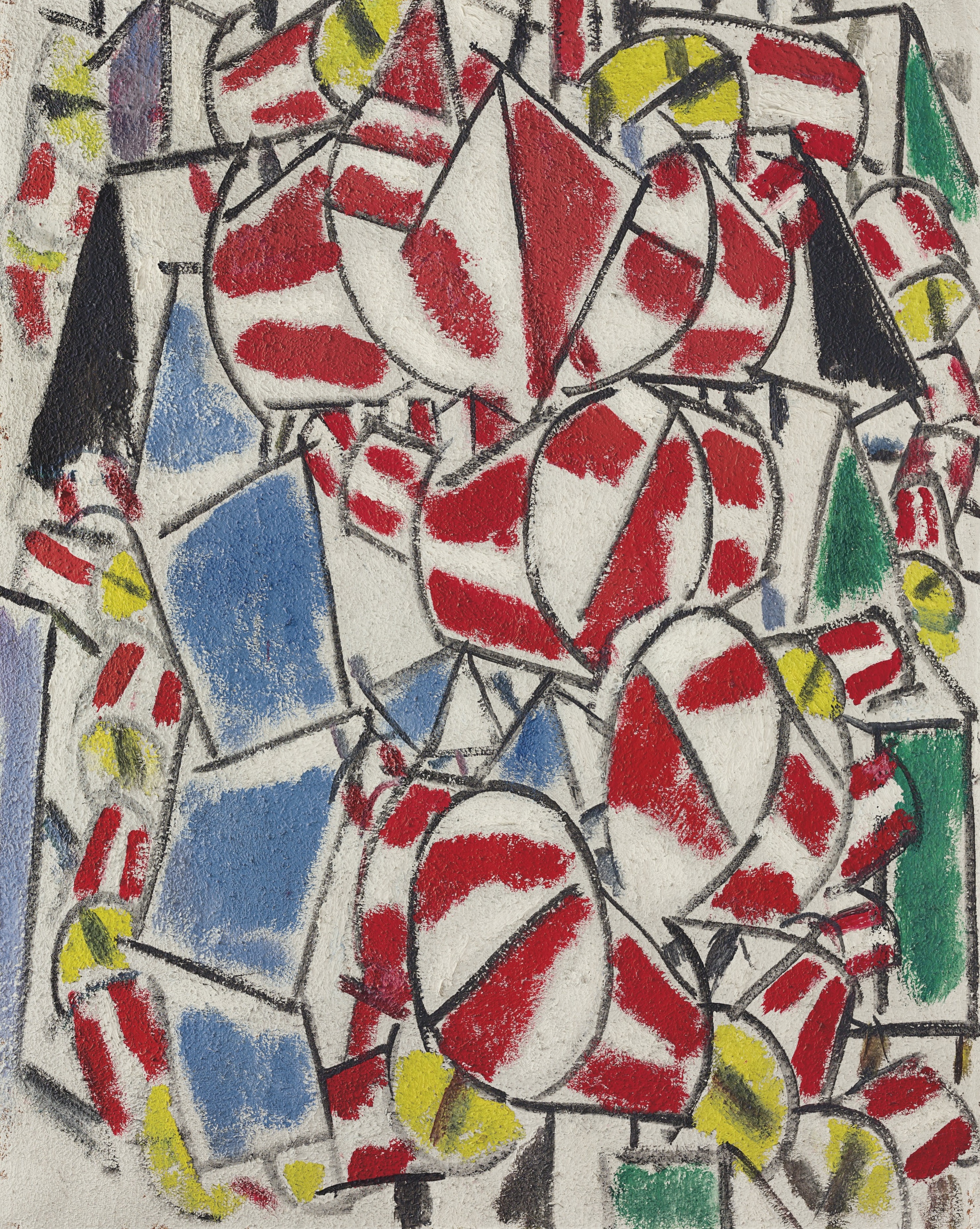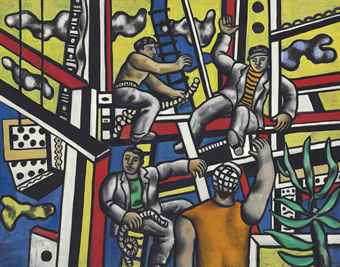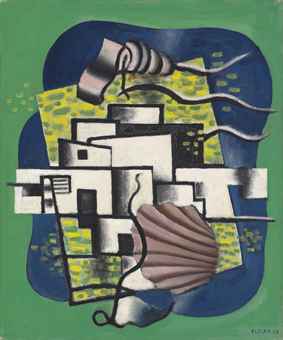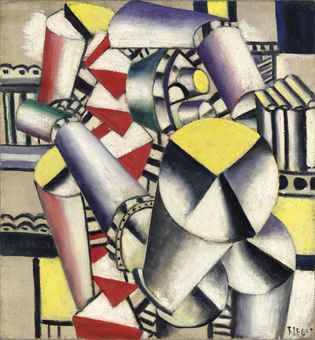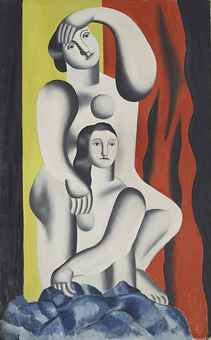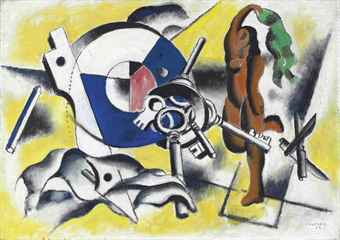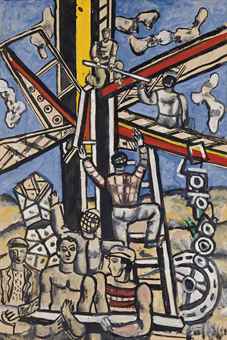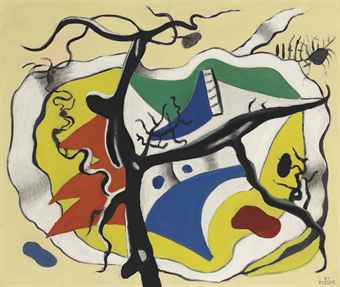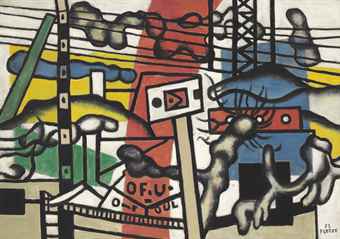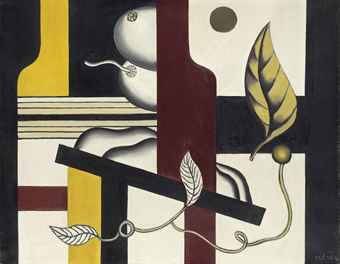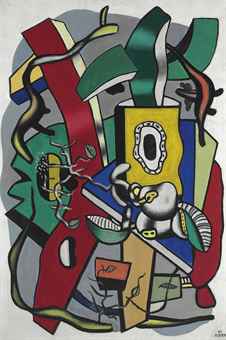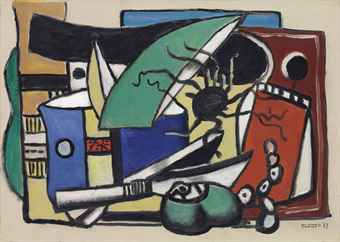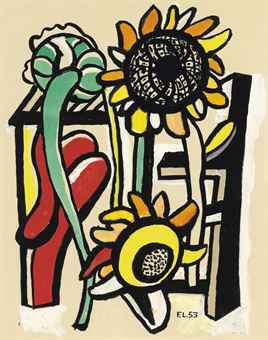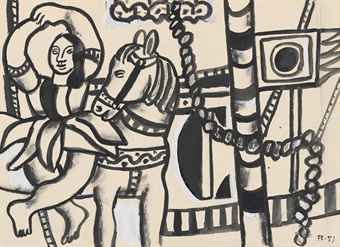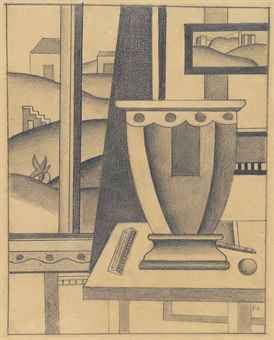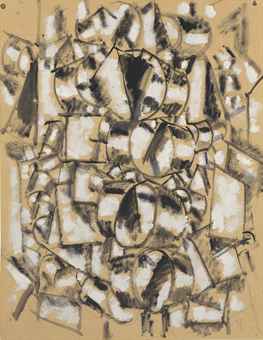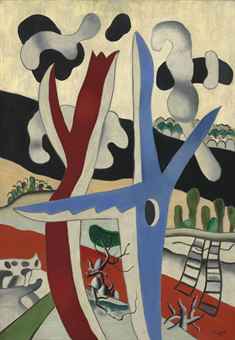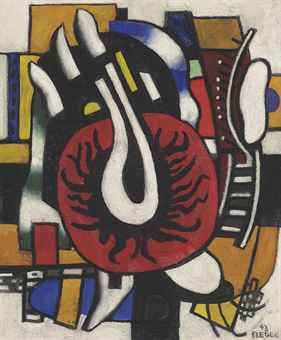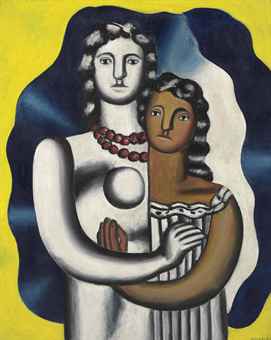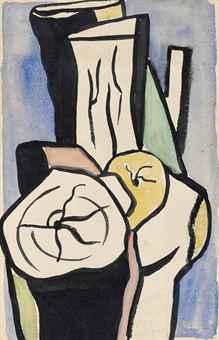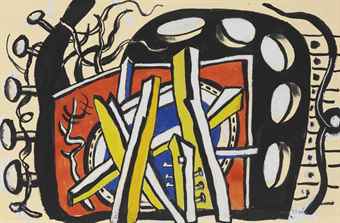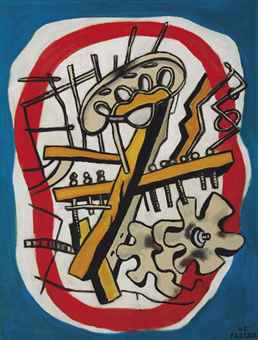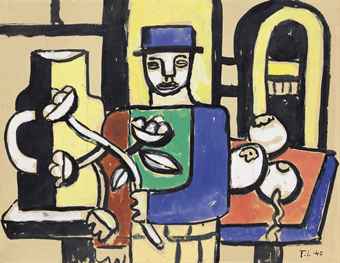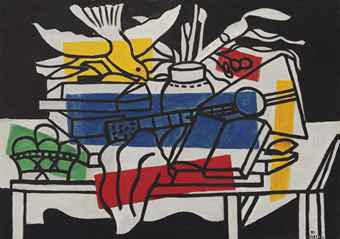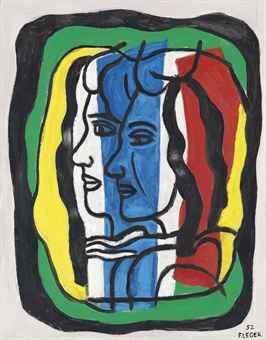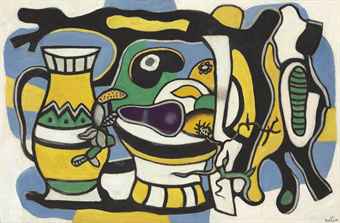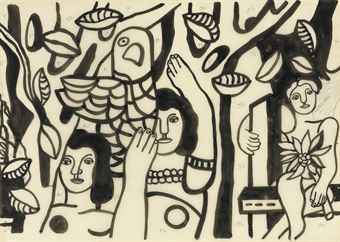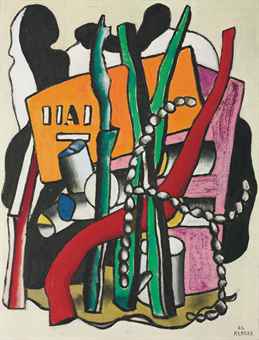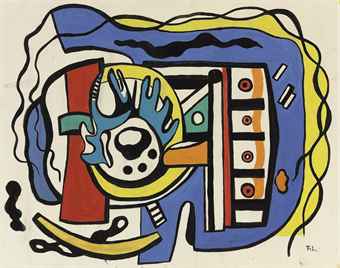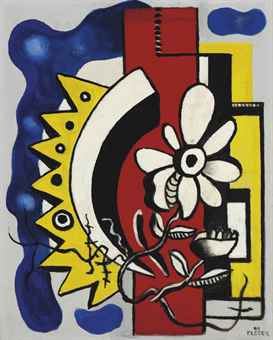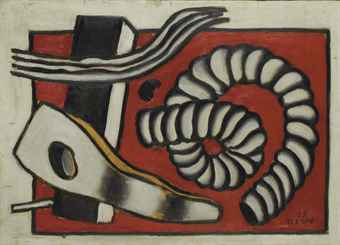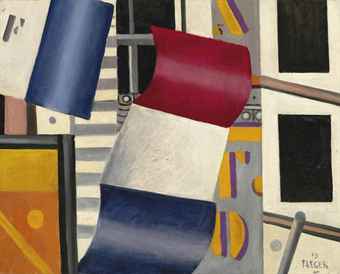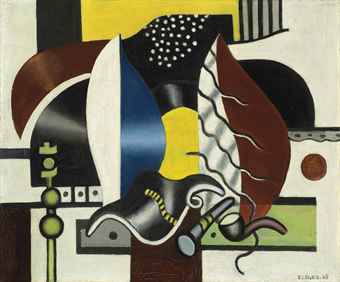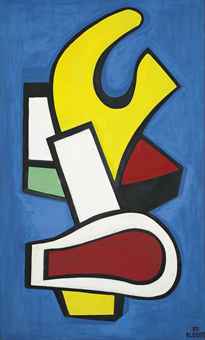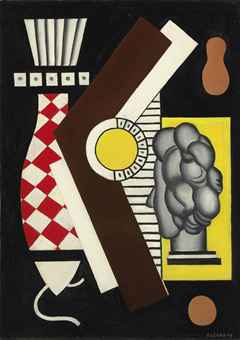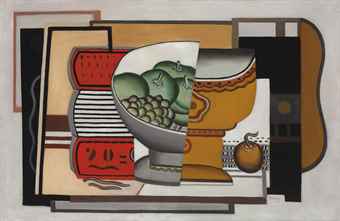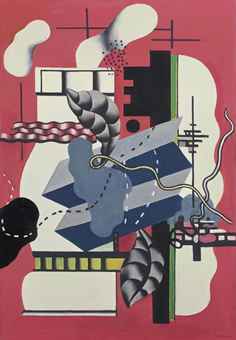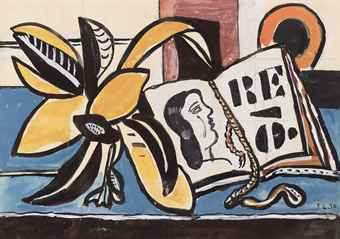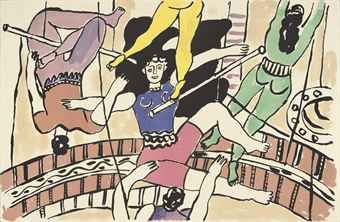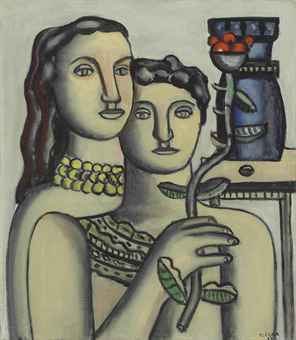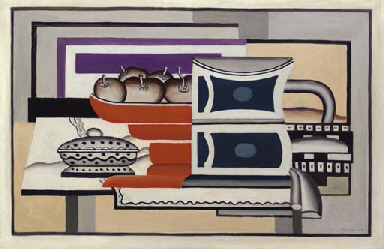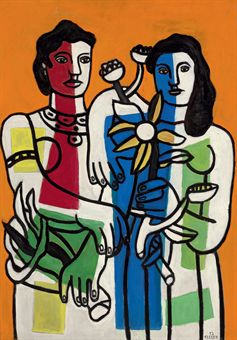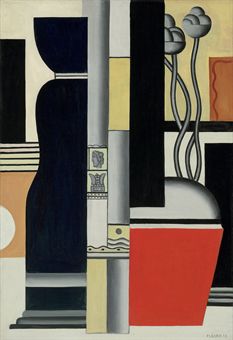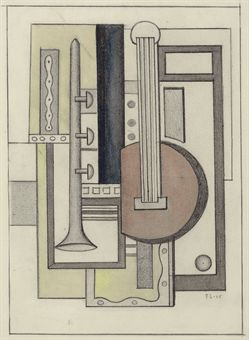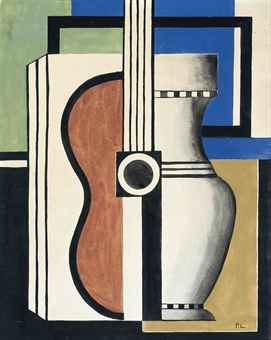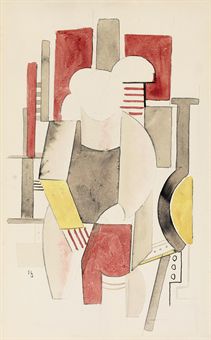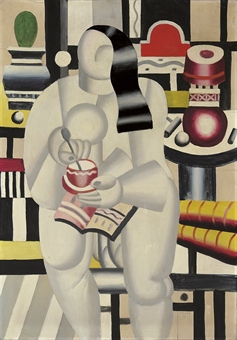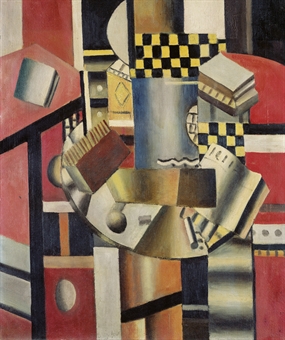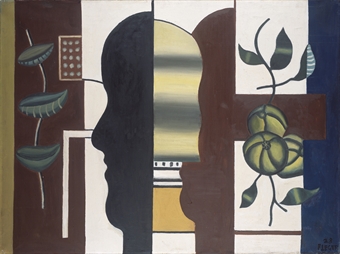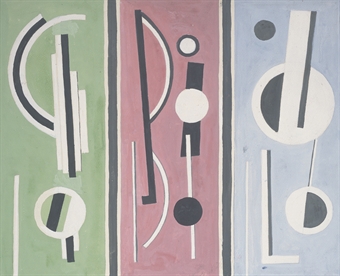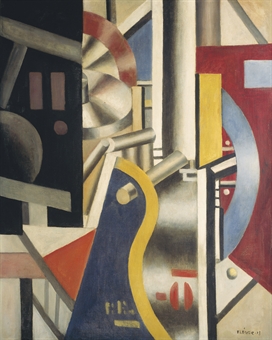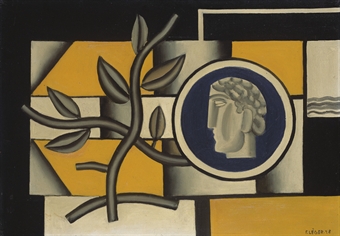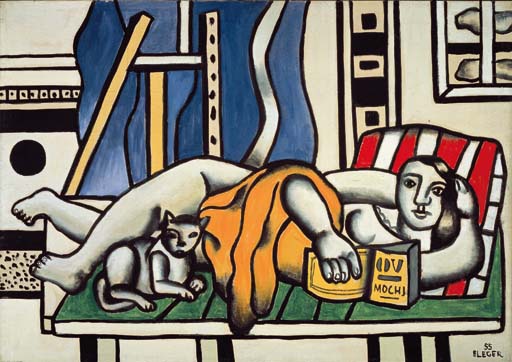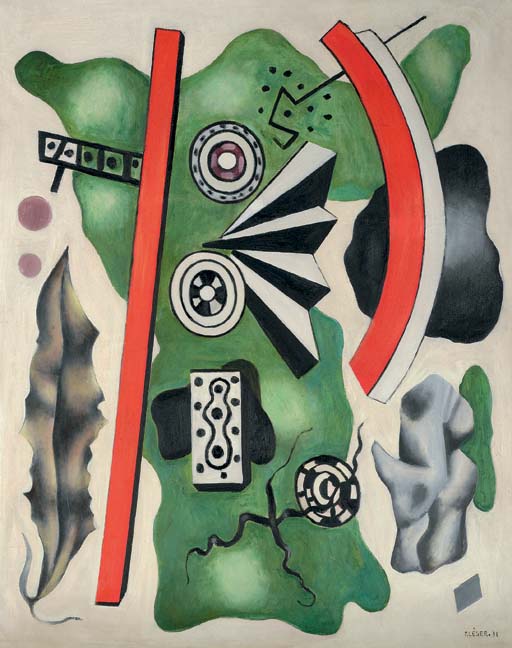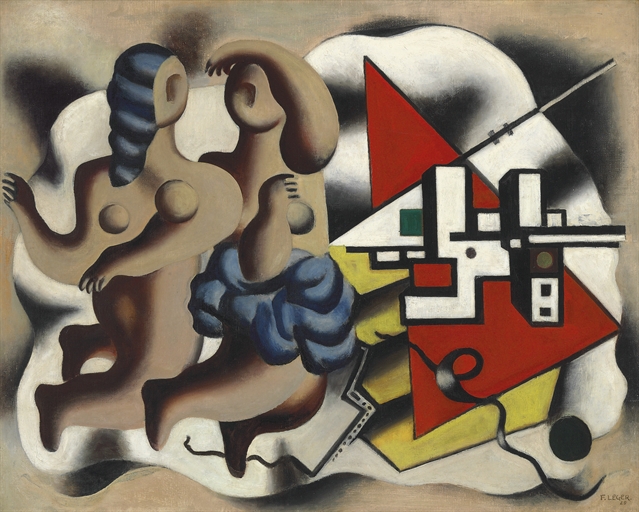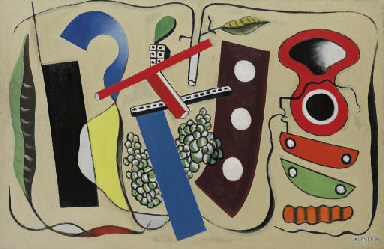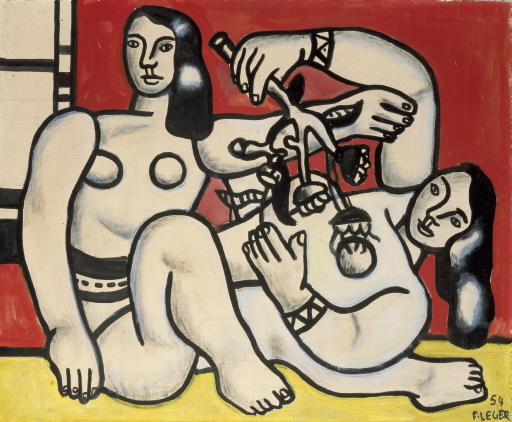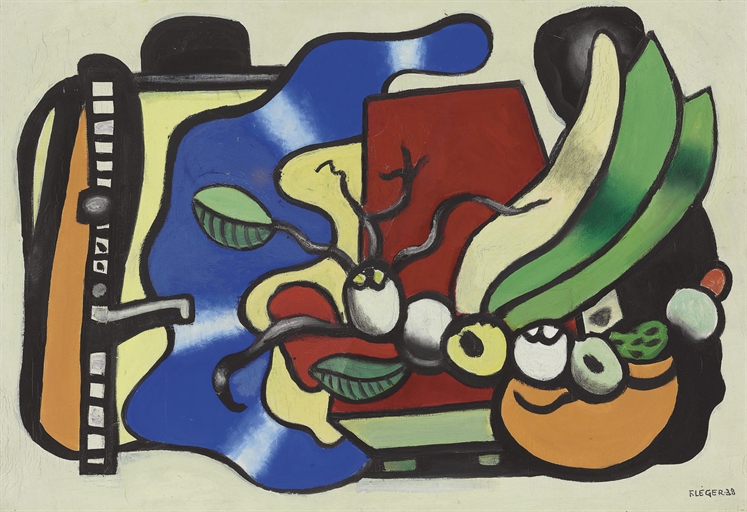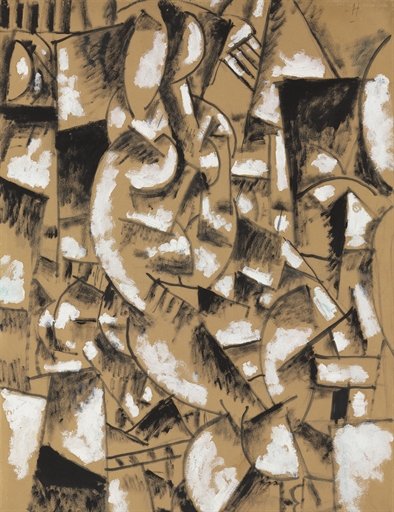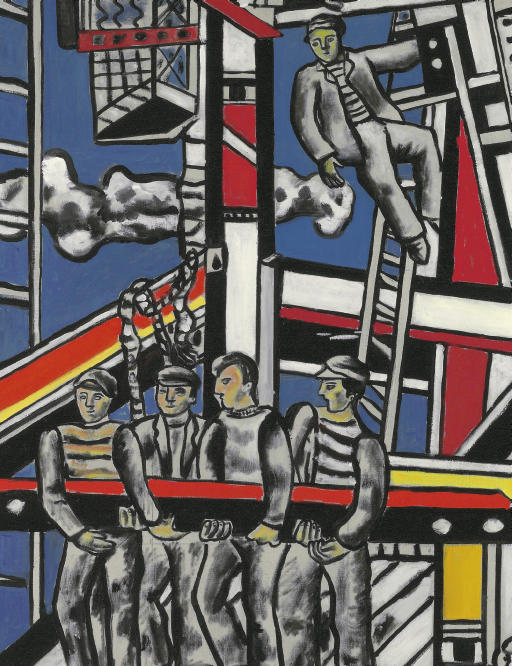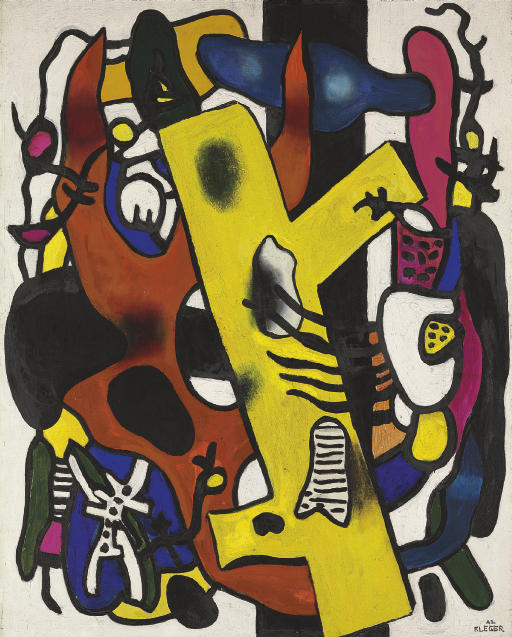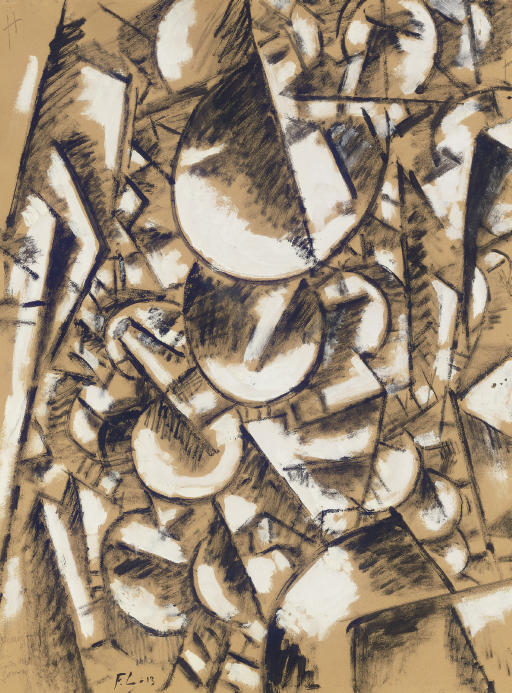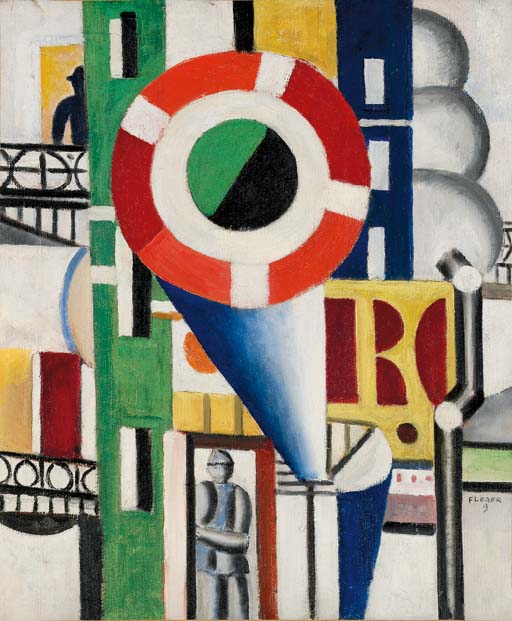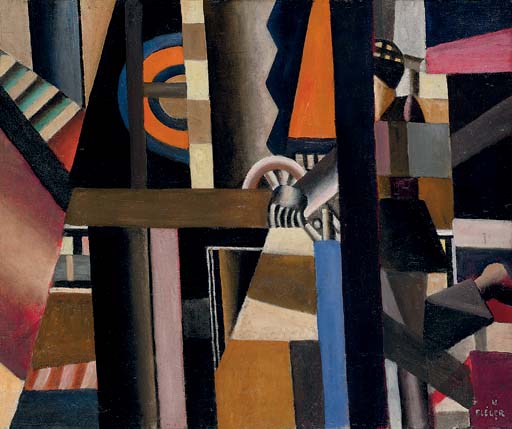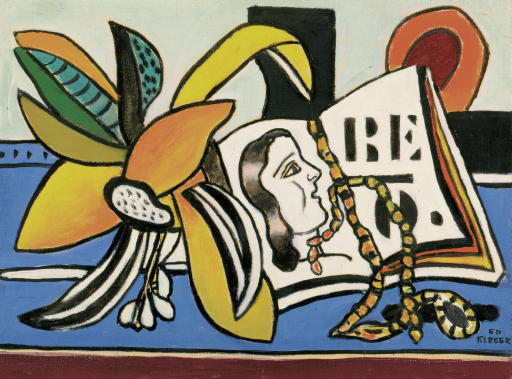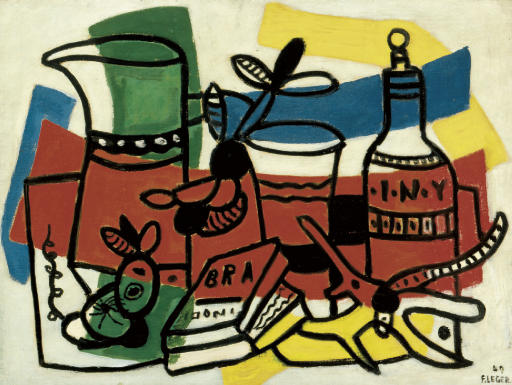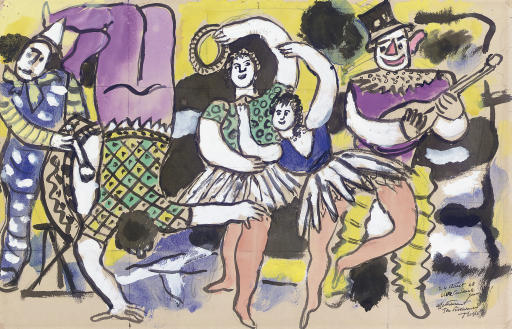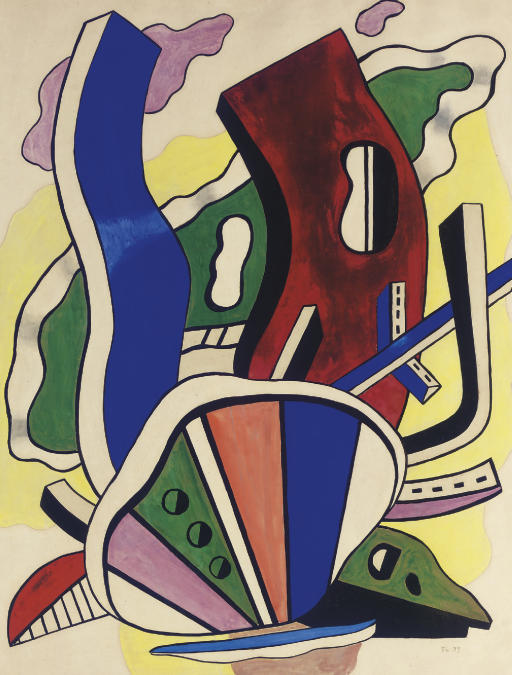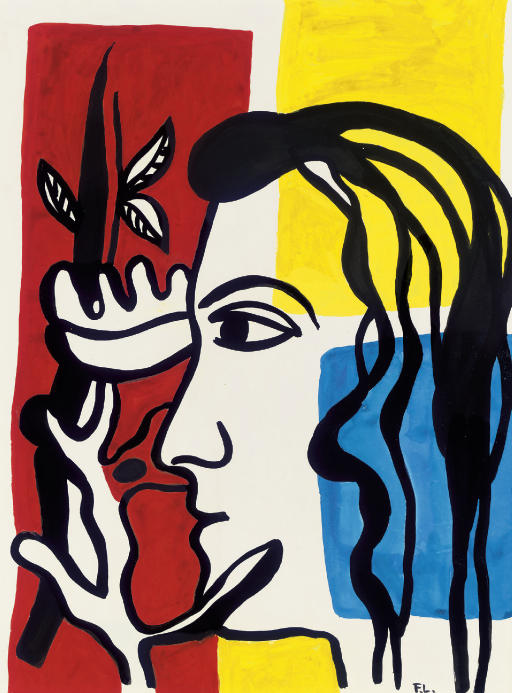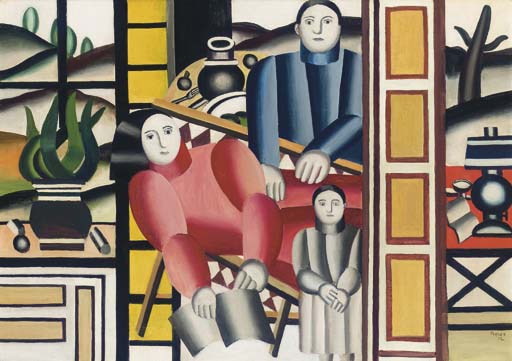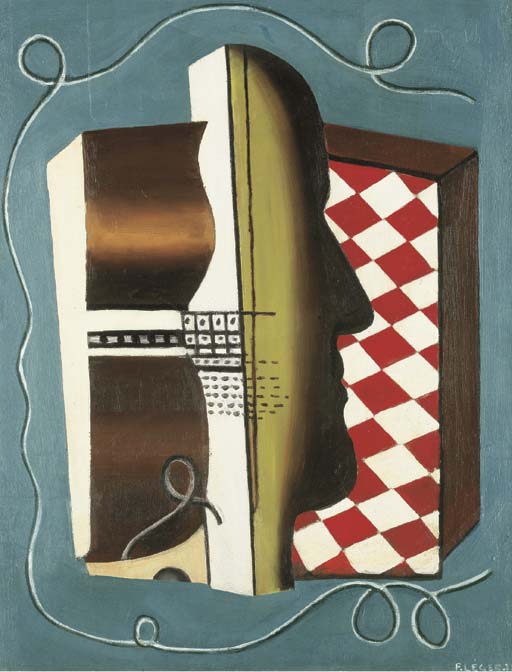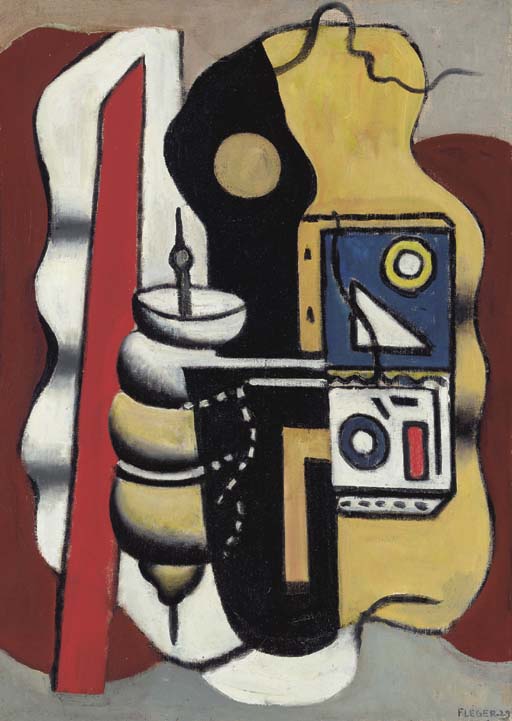Christie’s Impressionist and Modern Art May 15, 2018
Fernand Léger’s Les trois femmes au bouquet,
1922.
When Léger received a medical discharge in early 1917, ending his
front-line service, he had not picked up a paintbrush in fully three
years. Léger needed to catch up on later synthetic cubism,
constructivism, abstraction, and neo-plasticism, as well as the new
classicism. Remarkably, just four years later, Léger had achieved a
position at the very forefront of the avant-garde. His first fully
fledged manifesto of this new idiom was Le grand déjeuner (The
Museum of Modern Art, New York), which he exhibited at the 1921 Salon
d’Automne; a preliminary version of this masterwork will be offered in
the present sale (see dedicated press release here). However, Les trois femmes au bouquet, painted in 1922, represents the next stage in the evolution of Léger’s unique vision of the Three Graces.
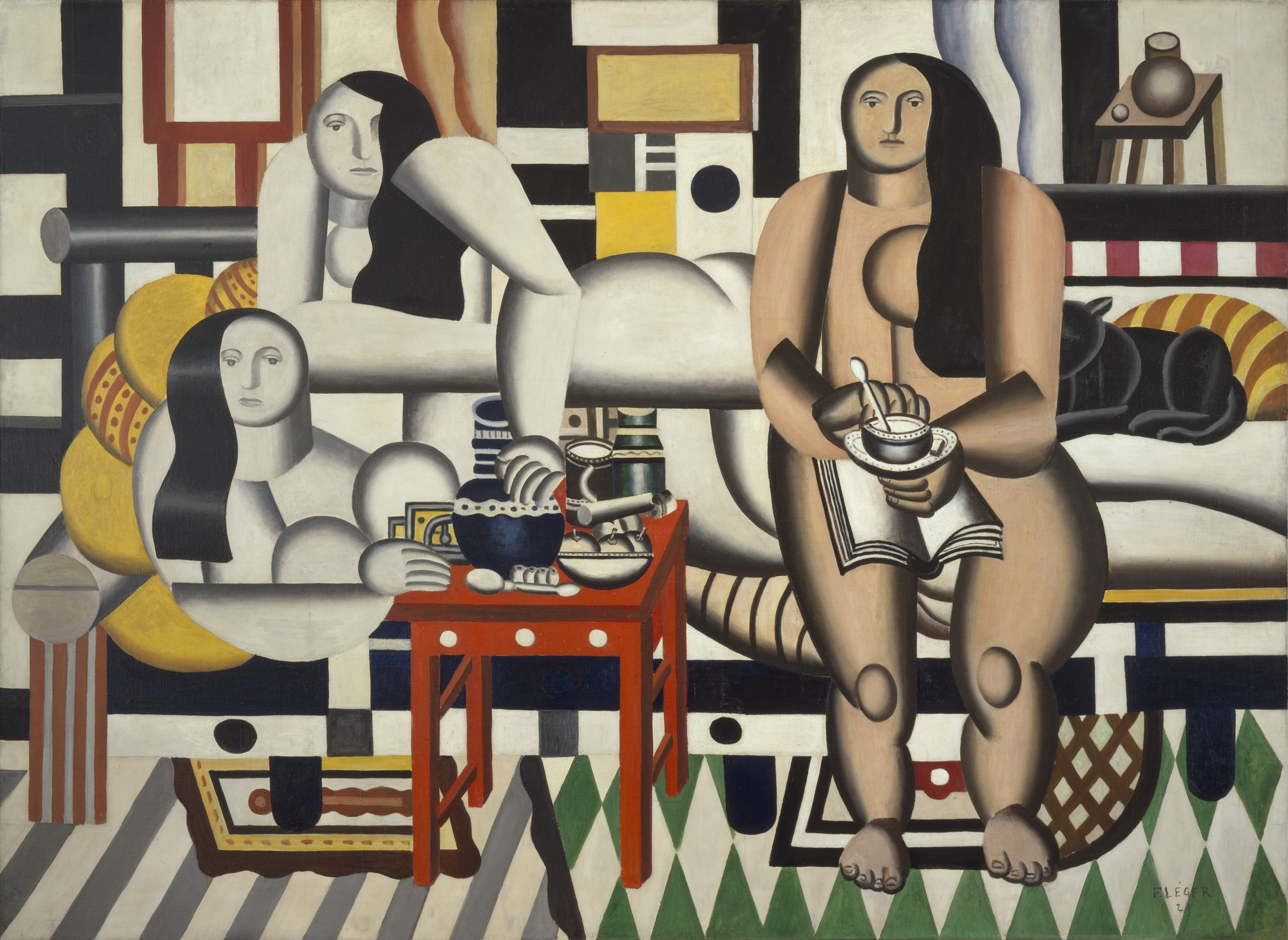
In Le grand déjeuner,
Léger directly confronted the theme of the female nude, by which so
many past masters had staked their claim to artistic greatness. Seeking a
more authentically modern subject, the artist expanded his focus to
encompass the example of 17th century genre imagery, in which simple daily routines provide a pretext for monumental figure painting.
Les trois femmes au bouquet,
which centers upon the modest domestic luxury of a floral bouquet, is a
key signpost in this development. Estimate: $12-18 million
On November 13, 2017, Christie’s will present Fernand Léger’s Contraste de formes, 1913, the most important canvas by the artist offered at auction in several decades (estimate on request). This
exquisite picture comes from Property from the Anna-Maria and Stephen
Kellen Foundation, and proceeds from the sale of this work will go
towards the foundation’s philanthropic mission.
Originally acquired from Léger at the end of 1913 by his dealer Daniel-Henry Kahnweiler, Contraste de formes was bought in 1956 from Galerie Rosengart in Lucerne by Ludmilla and Hans Arnhold, an international banker and art collector. Mr. Arnhold later bequeathed the painting to their daughter and son-in law, Anna-Maria and Stephen Kellen. Mr. Kellen was the esteemed and longtime CEO of the highly respected investment banking firm, Arnhold and S. Bleichroeder, Inc. (now First Eagle Holdings, Inc.), and with his wife were both passionate collectors and distinguished philanthropists.
The Kellens were deeply captivated by Léger and his work, often visiting the Musée National Fernand-Léger in Biot, France, with their children and eventually their grandchildren. Contraste de formes was a cherished highlight of the Kellens’ collection and it enriched their New York home for over 40 years. November 13 will mark the painting’s first time at auction.
Conor Jordan, Deputy Chairman, Impressionist and Modern Art, remarked:
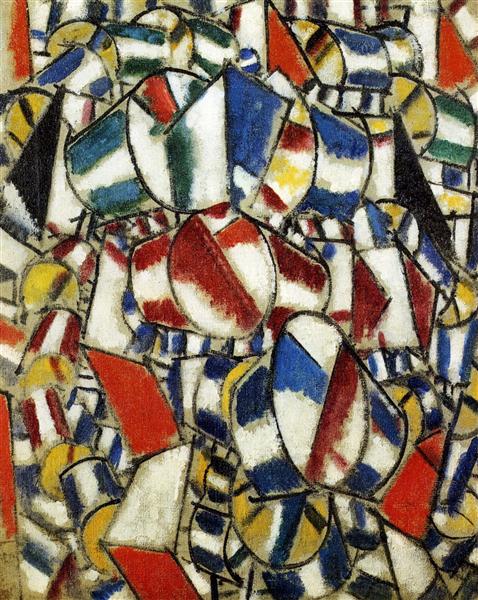
Recent record: Fernand Léger, Contraste de formes, 1913. $70,062,496 | November 2017
Christie's Impressionist and Modern Art on 13 November, 2017
PROPERTY FROM THE ANNA-MARIA AND STEPHEN KELLEN FOUNDATION
Fernand Léger, Contraste de formes, oil on burlap, Painted in 1913
Originally acquired from Léger at the end of 1913 by his dealer Daniel-Henry Kahnweiler, Contraste de formes was bought in 1956 from Galerie Rosengart in Lucerne by Ludmilla and Hans Arnhold, an international banker and art collector. Mr. Arnhold later bequeathed the painting to their daughter and son-in law, Anna-Maria and Stephen Kellen. Mr. Kellen was the esteemed and longtime CEO of the highly respected investment banking firm, Arnhold and S. Bleichroeder, Inc. (now First Eagle Holdings, Inc.), and with his wife were both passionate collectors and distinguished philanthropists.
The Kellens were deeply captivated by Léger and his work, often visiting the Musée National Fernand-Léger in Biot, France, with their children and eventually their grandchildren. Contraste de formes was a cherished highlight of the Kellens’ collection and it enriched their New York home for over 40 years. November 13 will mark the painting’s first time at auction.
Conor Jordan, Deputy Chairman, Impressionist and Modern Art, remarked:
“This is pure painting seen in its most exciting form, bursting with visual and intellectual ideas. The Kellen Foundation’s Contraste de formes, among the greatest Léger’s still in private hands, has a startling intensity. Executed just months before the First World War, Contraste de formes with its groundbreaking abstract conception and its thrillingly preserved physical state, is without question a major work of Modern Art. Standing at the threshold of 20th century art, this picture marks a departure from the purely figurative, leading the way for abstract art.”
Painted in 1913, Contraste de formes belongs to a series of paintings that changed forever the way we look at art. Across the course of just a few months, in a sequence of some fourteen canvases, Léger advanced beyond Cubism into a visual language that abandoned the representational concerns of his contemporaries, Picasso and Braque. Instead Léger made abstract shapes and colors, hinged on a network of forceful lines his only subject. The work of Léger during 1912-1914 is the story of the push towards pure or non-representational painting in France and the subsequent return to the subject in the months preceding the mobilization for war. The Contrastes de formes have long been considered cornerstones of important collections of modern art and thus nearly all examples from the series are today housed in major institutions.
]
In his Contrastes de formes series, Léger utilized simple geometric volumes composed of cylinders and planar elements which he rendered into multiple elements by means of line and color. He fabricated a tumbling surface in which shapes simultaneously appear to project out of the picture plane or recede into it suggesting volume. All the component lines, forms and colors are actively engaged as they play off each other to create a jolting, rhythmic composition. At first glance these surfaces display a helter-skelter appearance; however, there is a visual logic based on the simple aspect of his chosen component forms.
In the second Académie Wassilief lecture, prepared as Léger was bringing this series of paintings to a close, he wrote, “Composition takes precedence over all else; to obtain their maximum expressiveness lines, forms, and colors must be employed with the utmost logic. It is the logical spirit that will achieve the greatest result.”
Marina Kellen French, daughter of Anna-Maria and Stephen Kellen and a trustee of the Metropolitan Museum of Art, vividly remembered The New York Times art critic Roberta Smith’s review of the 2014 Met exhibition “Reimagining Modernism: 1900-1950.” “Just beyond the Picasso head in the “Avant-Garde” section hangs a fabulous early Léger…” wrote Roberta Smith, “filled with curving planes of red and blue girded by black lines and patches of rough white. A truly fabulous picture.”
Sotheby's 2016
Fernand Léger Eléments mécaniques (1919) Estimate: £3,000,000-5,000,000
Created shortly after the end of the First World War, Eléments mécaniques is a celebration of technological progress in anage of rapid industrialisation. The piece also marks a return to the simple purity of abstraction and bright palette, which Léger had abandoned whilst serving in the French army. He transforms the composition with a fragmentation of the objects and space to reflect the frenetic simultaneity of modern life.
Sotheby's 2013: Fernand Léger Élément mécanique, 1920. Hammer Price with Buyer's Premium: 8,677,000 USD
Sotheby's 2015 Fernand Léger LES HOMMES DANS LA VILLE. 1919 LOT SOLD. 5,626,000 USD
Christie’s Impressionist & Modern Art Evening Sale on Tuesday 2 February 2016
Dating from one of the most important periods of Fernand Léger’s (1881-1955) career, Le moteur was painted in May 1918, just months after the artist had resumed painting following his discharge from the army (estimate: £4-6 million). Taking as its subject a gleaming, multipartite, modern engine, Le moteur is one of the first of a group of visionary works that marks the beginning of Léger’s renowned ‘mechanical period’, which would come to define his art of the years following the First World War. Keen to embrace modernity in all its varied forms, Léger deified the machine during this period, using a fragmented, dynamic pictorial vocabulary with which to depict it. With its riotous explosion of bold colour, frenzied interlocking and overlapping forms and jubilant patterns and texture, Le moteur is a glorious example of this series of works: a vibrant emblem of the industrialised and modernised post-war era that so enthralled the artist.
Christie’s Evening Sale of
Impressionist & Modern Art November 5 2014
Fernand Léger’s Les constructeurs avec arbre, (estimate: $16-22 million), is an important example from the artist’s rarely offered and highly coveted Constructors series.
Known as the “painter of the machine age”, Léger was captivated by
themes of construction and engineering, using them in his work as a
symbol of man’s creative power in an industrialized modern world. In the
years 1949-1950, he painted Les constructeurs avec arbre, using it as the model for the what would become the final acclaimed painting in this series, Les constructeurs à l’aloès.
- The Constructor series is Léger's homage to the salt-of-the-earth working man, both as a class within French society and in the industrialized world generally, and as a more universal symbol of homo faber — man the maker and builder.
- The emphasis that Léger devoted to the configuration of the four workmen in this study resulted in this picture becoming the most strongly characterized of the large compositions in this series.
- At the upper left, one of the four construction workers perched on the girders of this building-in-progress is applying his muscular physique to the job. Two other men exchange greetings, and the fourth, perhaps a member of the architectural team that designed this structure, gazes dreamily away from the scene. This figure is thought to be Léger’s portrayal of himself as a young man.
By
Fernand Léger (1881-1955), is Sujet mécanique, from 1920 -a work which
depicts the streamline shape and smooth precision of an undetermined mechanical
object. Property of a Private European collector, the oil on canvas is
estimated to fetch £800,000-1,200,000.
Sotheby's 2013
From the NY Times:
Sotheby's 2015
Sotheby's 2013
From the NY Times:
A Fernand Léger painting owned by pop star Madonna sold for $7.2 million at a New York auction Tuesday. Madonna had put the painting up for sale to benefit her charitable group, the Ray of Light Foundation.Madonna sells Fernand Leger painting for $7.2 million
The sale, which was part of a larger Sotheby's auction of Impressionist and Modern art, exceeded expectations. The auction house had originally estimated that the work would go for between $5 million and $7 million.
"Trois Femmes à la Table Rouge" was created around 1921 and is a quasi-cubist depiction of three women sitting around a red table...
Sotheby's said Madonna acquired the painting in 1990 from the Helen and William Mazer Foundation. The New York Times reported last month that the pop star had paid $3.4 million for the painting at a Sotheby's sale.
The pop star said in a statement earlier this year that she will "donate all the proceeds [from the Léger sale] to support girls' educational projects in Afghanistan, Pakistan and other countries where female education is rare or nonexistent."
Sotheby’s 2008
FERNAND
LÉGER (1881-1955)
UN ARBRE SUR UN FOND ROUGE
Painted in 1954, oil on canvas
Est:
£350,000-450,000 / €490,000-630,000
The visual and psychological interplay of opposing forms and
aesthetics underpinned Léger's most dynamic works during the 1950s, powerfully
exemplified in Un Arbre sur un fond rouge. Treating the patches of colour
independently of the linear elements, Léger subverted the conventions of
pictorial representation. Reflecting his social tendencies and desire for artto
be accessible to the masses, Léger's undermining of standard conventions
rejected the traditional methods of appreciating a work of art demanding
instead a revised set of rules, governed by instinct and visualisation in place
of education and class.
Sotheby's 2015
Fernand Léger
LOT SOLD.
905,000 GBP
Fernand Léger
Sotheby's 2014
Fernand Léger
LOT SOLD.
6,325,000 USD
Fernand Léger
LOT SOLD.
941,000 USD
Fernand Léger
Fernand Léger
LOT SOLD.
81,250 USD
Fernand Léger
Estimate 500,000
—
700,000 USD
Fernand Léger
LOT SOLD.
50,000 USDChristie’s 2015
Christie’s 2014
Christie’s 2013
Christie’s 2012
Gaz de France
Pr.£145,250($230,948)
Pr.$422,500
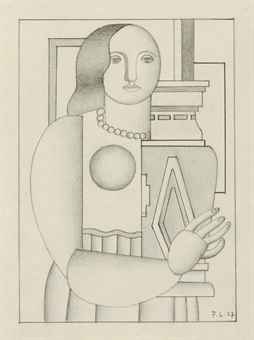
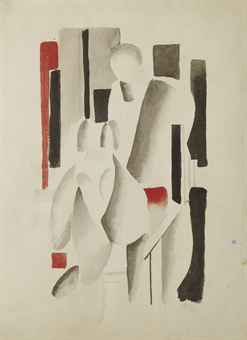
Christie’s 2011
Pr.$1,538,500
Christie’s 2010
Pr.£1,945,250($3,092,948)
Pr.$2,770,500
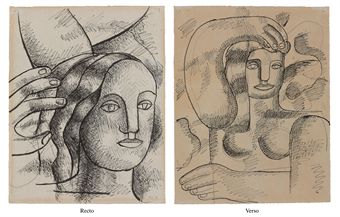
Christie’s 2009
Christie’s 2008
Christie’s 2007
Projet
de décoration pour Rockefeller Center
Christie’s 2006
Christie’s 2005
Christie’s 2004
